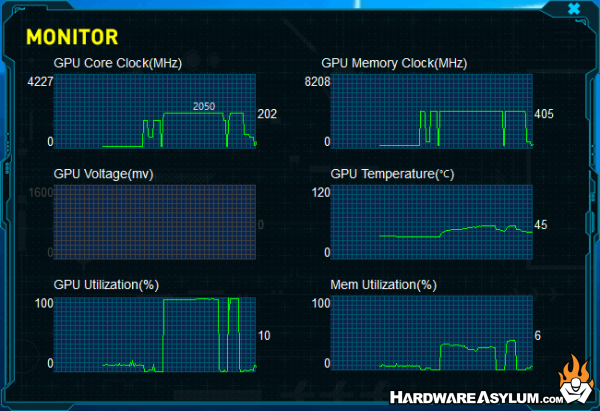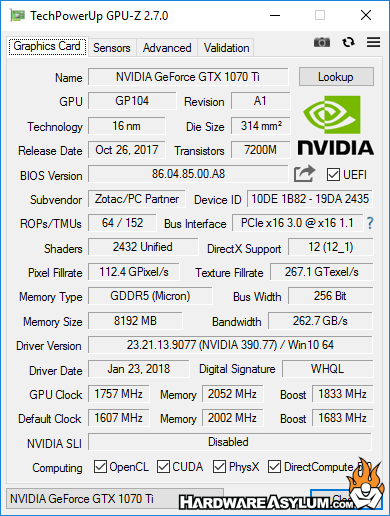Zotac GTX 1070 Ti AMP! Extreme Video Card Review
Author: Dennis GarciaOverclocking the Zotac AMP Extreme
Overclocking the Pascal GPU can be a frustrating process with some very surprising results. On the surface the GPU looks to accept additional clocks extremely well until you realize that your manual baseclock might be well within the Boost 3.0 range. Ideally the card should run at that frequency until you realize that the Boost clock is still active and may have boosted your GPU outside of the operating range. Overall the process can be rather unpredictable.
When I say “operating range” I mean the allowable frequency. You see, Pascal has a "hard lock" inside the chip and if you have a good one you might run around 2100Mhz and a bad one may top out at 1900Mhz.
During my overclocking adventure I was able to get the Zotac GTX 1070 Ti AMP! Extreme to run stable at a solid 1757Mhz Core and 2052Mhz memory. This is a 150Mhz gain on the core and 100Mhz more on the memory. Of course the best part is when Boost 3.0 kicks in where I noticed a Boost Clock of 2050Mhz!

To attain this overclock I only needed to install the Zotac Firestorm application and load an overclocking profile. The profile made a few tweaks and basically automatically overclocked the card beyond the factory “hot clock”. I’ve always been against auto overclocking since you never know excatly what it is doing. The system might be pumping in too much voltage to compensate for bad chips or just overclocking based on lab results instead of a "typical" sample..
With the 1070 Ti AMP! Extreme the overclocking profile is just a few Mhz below what I could attain doing a manual overclock and I’d call that a win in my book.





Despite the rather impressive overclock there is very little gain when looking at any of the benchmark results. This can be attributed to a couple of factors. The first is NVIDIA Boost 3.0 and the fact that this card was boosting up to 1975Mhz on stock clocks helped close the gap. Raising those clocks 150Mhz should have shown a higher gain however, the speed difference wasn’t much compared to the base clock. Also despite my clock settings being configured for 2050Mhz the NVIDIA Boost 3.0 controls everything about the card including how much boost it really wants to run. Under most situations the card was locked at 2050Mhz but bounced between 2100Mhz and 2000Mhz depending on what was playing.
Keep in mind that overclocking is not guaranteed so your results may vary.

